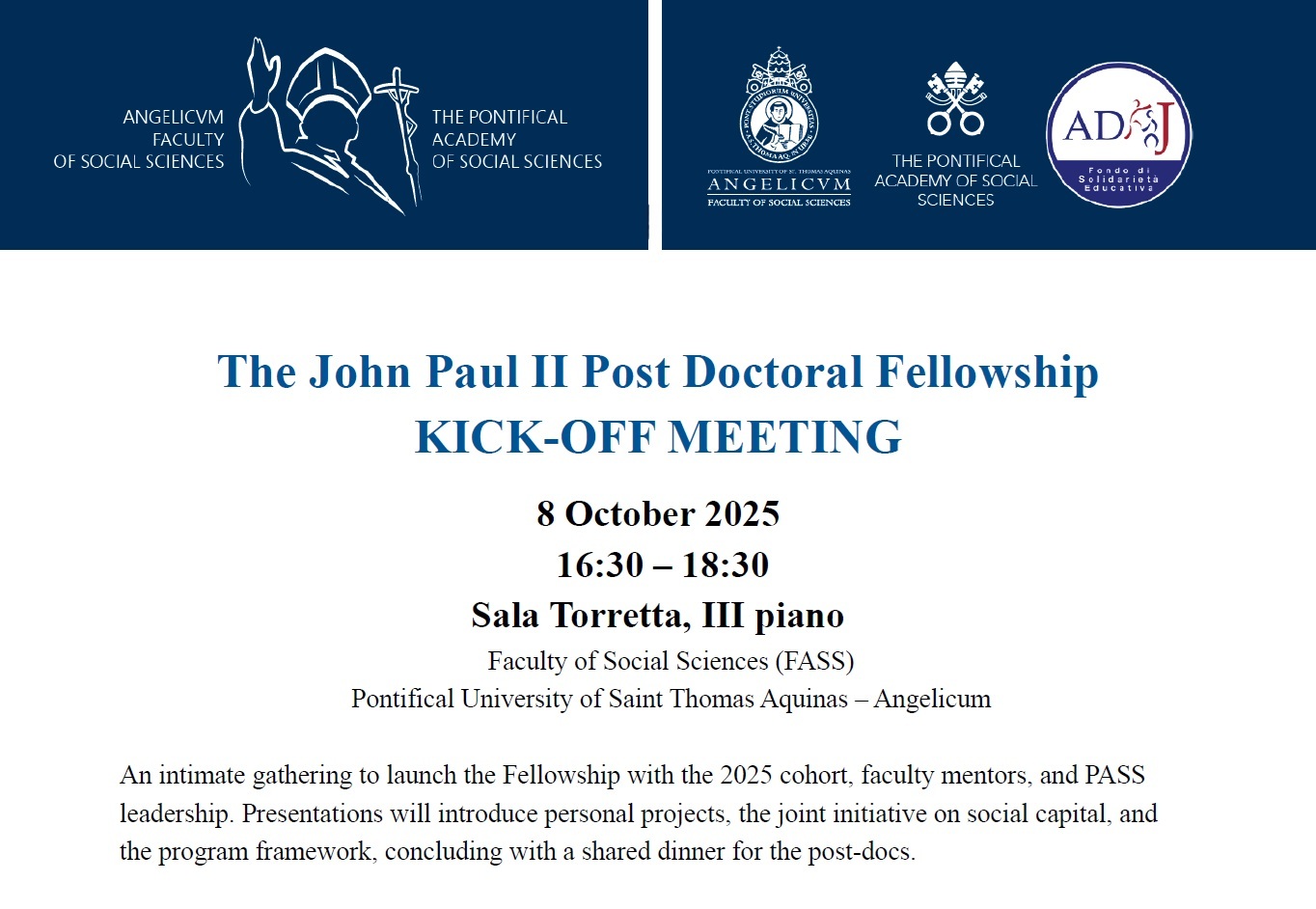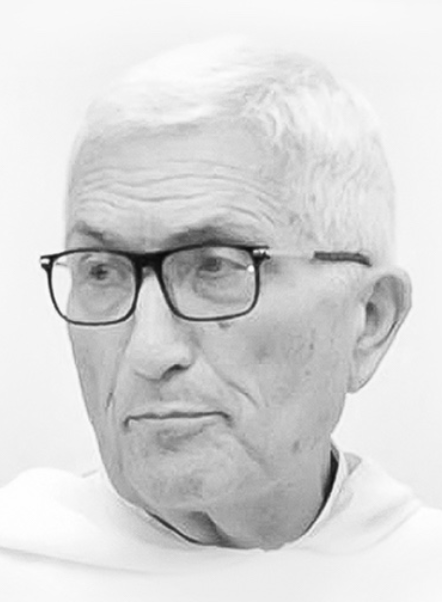Allow me to begin this article with the following excerpt:
 “There was no need for you to deliver speeches, isn’t that so? You can be great without being an orator, but what a pity it will be for you on the day the supreme committee appears before the great leader if, when the orators try to outdo each other, you take refuge in silence. No, I won’t remain silent. I’ll speak. I’ll say exactly what I feel, whether or not I excel at it. When will you stand before Sa’d? When will you see him for the first time and feast your eyes on him? My heart is pounding and my eyes long to weep. It will be a great day. All of Egypt will come out to welcome him. What we’re doing today is like a drop of water in the sea compared with that time. O Lord! The square’s full. The streets feeding into it are full: Abbas, Nubar, al-Faggala. There’s never been a demonstra-tion like this before. A hundred thousand people, wearing modern fezzes and traditional turbans – students, workers, civil servants, Muslim and Christian religious leaders, the judges… who could have imagined this? They don’t mind the sun. This is Egypt…”
“There was no need for you to deliver speeches, isn’t that so? You can be great without being an orator, but what a pity it will be for you on the day the supreme committee appears before the great leader if, when the orators try to outdo each other, you take refuge in silence. No, I won’t remain silent. I’ll speak. I’ll say exactly what I feel, whether or not I excel at it. When will you stand before Sa’d? When will you see him for the first time and feast your eyes on him? My heart is pounding and my eyes long to weep. It will be a great day. All of Egypt will come out to welcome him. What we’re doing today is like a drop of water in the sea compared with that time. O Lord! The square’s full. The streets feeding into it are full: Abbas, Nubar, al-Faggala. There’s never been a demonstra-tion like this before. A hundred thousand people, wearing modern fezzes and traditional turbans – students, workers, civil servants, Muslim and Christian religious leaders, the judges… who could have imagined this? They don’t mind the sun. This is Egypt…”
The enormous parade began to move. Successive waves rolled forward, chanting patriotic slogans. Egypt appeared to be one great demonstration… united in one person and a single chant.
One could not be blamed for thinking that the above-quoted text is part of a memoir written by an eyewitness to the popular revolution that took place between January and February 2011, ousting the former Egyptian President, Hosni Mubarak. But the scene is Ramses, not Tahrir Square, and the event is portrayed in a famous novel by Nobel-Prize winner Naguib Mahfouz1. It describes one of the many demonstrations that took place in Cairo during the 1919 revolution against the British de facto protectorate that had exiled SaʿdZaġlūl, leader of the Egyptian independence movement (the Wafd Party), and his associates, to Malta. After his return from exile Zaġlūlwent on to form the first Wafd government in 1924 which followed the end of the protectorate and the first decla-ration of independence two years earlier.
The roots of Arab nationalism
A common theory concerning the origin of Arab nationalism traces its roots to the mid-nineteenth century at the height of the colonial period. One of the effects of colonialism was the introduction of the print-ing press and the establishment of the first newspapers in the Arab world. In tandem with this process the above-mentioned period also witnessed the decline of the Ottoman Empire, which was allegedly dubbed ‘the sick man of Europe’ by Czar Nicholas I. For over two centuries the Ottomans had been suffering a steady string of disastrous defeats at the hands of the Russians, who had gained large swathes of territory in Central Asia. The Ottomans were being kept walking on crutches by Britain and France so as to counter Russian expansionist policies in Eastern and Central Europe, especially Serbia, Montenegro, and Bosnia-Herzegovina. Also, it is ironic that the fervour for nationalism that arose in Europe in the aftermath of the 1789 and 1848 revo-lutions was transmitted through Western colo-nialism to the Arab World. The First World War triggered the Arab revolt against the Ottoman Empire and laid the foundations for the establishment of Arab identity and Arab nationalism.
However, another more recent theory proposed by Adeed Dawisha2 contends, a-mong other things, that the Arab revolt against the Ottomans was not inspired by nationalism, but rather by Islam. It was not a question of national identity but of religious identity. It was only in the aftermath of the First World War that Arab nationalism began to take centre stage. Then, the first post-war intellectuals within this movement, such as Sāṭiʿ al-Ḥuṣrī, adopted a secular outlook and received their inspiration from the German Romantic Movement 3. This should come as no surprise, since the German Empire had forged strong ties with the Ottomans through-out the second half of the nineteenth century that were ultimately sealed by the agreement to construct the Berlin-Baghdad railway line which began in 19034. The purpose of this railway was to establish a port in the Persian Gulf by means of a line that crossed present-day Syria, Turkey, and Iraq. It is therefore not surprising that the Ottoman Empire took the side of Germany and Austria throughout the First World War.
The First Word War and its aftermath
British presence and influence was already well entrenched in Egypt and the Sudan, following the defeat of the Mahdi at Omdurman in 1898. At the height of the First World War Britain and France (with the tacit agreement of Russia) drew up the Sykes-Picot Agreement5 whose aim was effectively to partition the Middle East into British, French and Russian control or spheres of influence. Following the end of the war the agreement was modified in the light of a number of conferences summoned by the Allied powers6. Furthermore, as the First World War was drawing to a close, the then British Foreign Secretary Arthur James Balfour, had written a letter to Baron Rothschild dated 2 November 1917 in which he stated the following:
His Majesty’s Government view with favour the establishment in Palestine of a national home for the Jewish people, and will use their best endeavours to facilitate the achievement of this object, it being clearly understood that nothing shall be done which may prejudice the civil and religious rights of existing non-Jewish communities in Palestine, or the rights and political status enjoyed by Jews in any other country7.
This letter became known as the Balfour Declaration which, together with the above-mentioned Sykes-Picot Agreement, has pro-voked controversy and conflict in the Middle East ever since. The Arabs who had col-laborated and fought with the British and had been promised self-determination and rule felt betrayed by these post-war treaties and conferences. In the current conflict raging in the Middle East, the ISIS movement has repeatedly stipulated that one of its aims is to bring an end to the Sykes-Picot Agreement.
With the defeat and collapse of the Ottoman Empire at the end of the First World War and the seizure of power by Mustafa Kemal Pasha (Ataturk), following the Turkish War of Independence, the Sultanate was abolished on 1 November 1922 and the Republic of Turkey was officially declared on 29 October 1923. These dramatic events brought about the end of the Islamic caliphate that had led the Islamic world, at least nominally, since the death of the Prophet. But the dream to revive this institution has never died and many leaders, both political and religious, have claimed the mantle of leader-ship in an attempt to re-establish its authority. ISIS is the latest in a series of such claimants.
Independence movements
One of the consequences of the First World War was the awakening of the concept of nationhood, spearheaded by independence movements throughout the region of the Middle East. Following a decision of the League of Nations, Palestine, together with Jordan, became states under the British Man-date in September 1922. On 25 May 1946 the United Nations recognized the end of the Mandate and the establishment of the Hash-emite Kingdom of Jordan under the leadership of King ʿAbd Allāh. Iraq, on the other hand, came under British Mandate in 1920 and was granted independence in 1932, thereby be-coming a kingdom under Faysāl I (also a Hashemite) who had earlier been expelled from Syria by the French. It remained a kingdom till 1958 when a military coup d’état overthrew the monarchy. Other revolutions took place until the Baʿath Party seized power in 1968. Syria and Lebanon formed part of the ‘French Protectorate’ in 1920. The French met with stiff resistance and a series of revolts which lasted till 1927. Syria ultimately gained independence in September 1936 and was declared a republic. Lebanon, which France had formed as the Lebanese Republic in 1926, gained independence in 1943 during the German occupation of France.
Certainly, the call for Arab unity and the Arab nationalist movement rose from the ashes of the dashed hopes of the Arabs following the Versailles Peace Conference of 1919. But not everyone was happy with the notion of Arab identity. This held true especially in the case of Egypt where E-gyptian identity and nationalism (waṭaniyya) was at times quite strong, beginning with political leaders such as the above-mentioned Zaġlūl. But such sentiments were to be found also among the Egyptian intelligentsia, such as the renowned novelist and playwright Tawfīq al-Ḥakīm8.
The rise of Arab nationalism
Nevertheless, the idea of Arab nationalism gradually gained ground. During the years 1943-1944, at the height of the Second World War, the prime minister of Egypt Nahas Pasha initiated a series of bilateral talks with his counterparts in Syria, Lebanon, Transjordan, Arab Palestine, Saudi Arabia, and Yemen. These meetings led to the establishment of the League of Arab States (known popularly as the Arab League) on 22 March 1945 in Cairo. Its first trial by fire was to take place two years later.
First obstacles
Following the end of the Second World War thousands of European Jews expressed the desire to leave the continent and settle in Palestine, which had remained for them, and for previous generations, the Promised Land. Many did so clandestinely, albeit not always successfully as was the case of the ‘Exodus’ incident9. Those who arrived at their des-tination quickly organized themselves and initiated a resistance movement against the British mandate in Palestine. The most tragic outcome of this position was the bombing of the King David Hotel in Jerusalem on 22 July 1946, part of which housed the British administrative headquarters for Palestine10. In February 1947 Britain, through its Foreign Secretary Ernest Bevin, informed the United Nations that it had all but lost control of Palestine and on 29 November of the same year, following pressure from the United States, the United Nations General Assembly voted to partition Palestine between the Arabs and the Jews. This brought a swift reaction on the part of the Arab League, who vowed never to recognize a Jewish state in that region. As soon as British troops evacuated Palestine on 18 May 1948, David Ben-Gurion and other Jewish leaders declared the founding of the state of Israel on the territory under their immediate control. The member states of the Arab League immediately intervened militarily in Palestine. At first glance this intervention appeared to have been a show of collaboration among the member states and of solidarity with the Arabs in Palestine. But, as Dawisha has pointed out, this was far from the truth. Each member state of the League harboured ambitions of its own, and there were times when the army of one state placed obstacles in the way of the other, to say nothing of the discord that emerged among the heads of member states11. Within a matter of months the joint operation came to nothing.
In spite of this setback, the project of Arab nationalism was being developed by political parties within some member states of the Arab League, especially in Egypt, Syria, and Iraq. In the early 1940’s the Arab Baʿath Movement12 in Syria was co-founded by Michel Aflāq (a Christian) and Salāḥ al-DīnBiṭār (a Sunni Muslim). On7 of April 1947 it merged with the Arab Baʿath Party, most of whose members abandoned Arab nationalist Zakī al-Arsuzī (an ʿAlawite), and became known as the Arab Socialist Baʿath Party. The first article of the party’s constitution stated explicitly its vision of Arab nationalism:
The Arabs form one nation. This nation has a natural right to live in a single state. [As such] the Arab fatherland constitutes an indivisible political and economic unity. No Arab country can live apart from the others13.
Arab nationalism and Egyptian hegemony
Arab nationalism achieved its first great success during the 1956 Suez crisis. Despite suffering heavy casualties as a result of the Anglo-French invasion of Port Saʿīd, Ismaʿīliyya and Suez, the President of Egypt GamālʿAbd al-Nāṣir scored a resounding political victory when both British and French troops were forced to withdraw on 22 December 1956 under US diplomatic pres-sure. Overnight, he became a regional hero and the standard bearer of Arab unity against imperialist and colonialist aspirations.
During the second half of the 1950’s the Baʿath party also initiated talks with President ʿAbd al-Nāṣir, which led to the merger of Syria and Egypt, the new entity being established as the United Arab Republic (UAR) on 1 February 1958. This event proved to be the culmination of the Arab nationalist movement, as it helped galvanize the hopes of millions of Arabs throughout the entire Middle East. Following the establishment of the Syrian-Egyptian union, the Egyptian pres-ident put pressure on Aflāq to dissolve the Baʿath Party. Aflāq acceded to the request, although he still believed its principles constituted the ideological backbone of the new state. In fact, he declared:
We will be officially dissolved but we will be present in the new unified party, the National Union. Born of the union of the two countries, this [unitary party] cannot be animated by principles other than those of the Baʿath14.
These hopes, however, turned out to be short-lived, as the Syrians began to feel increasingly frustrated by the way they were being side-lined by the Egyptians. They had imagined the UAR as a union of equals under the leadership of ʿAbd al-Nāṣir, but they ended up playing second fiddle to their larger and more populous counterpart while watch-ing the Syrian administrative, legislative, and military machine being absorbed by Egypt 15. This ill-feeling eventually brought about the secession of the Syrians from the union through a military coup d’état that took place on 28 September 1961.
The fiercest opponents on the ideological level to both Egyptian nationalism and, later, to Arab nationalists were the Islamic movements, beginning with the Muslim Brotherhood (al-Ihwān al-Muslimūn) found by Ḥasan al-Banna (d. 1949) in 1928, and later galvanized into a political force by SayyidQuṭb (d. 1966). Such movements do not envisage Islam as being inculturated in a given place and time, but as transcending both boundaries.
Decline and fall
In order to advance his own brand of Arab nationalism, ʿAbd al-Nāṣir suppressed the Muslim Brotherhood and had its leaders, including SayyidQuṭb, imprisoned, tortured, and condemned to death, while others went into exile.They believed that their ideology was vindicated when Arab nationalism received its first decisive blow: the Egyptian army was all but annihilated during the Six Day War of 1967, when Israel captured the Sinai Peninsula from Egypt, took the Golan Heights from Syria, and annexed East Jerusalem and the West Bank from Jordan. Furthermore, from that moment onwards, the President of Egypt decided to turn his attention wholly to domestic affairs.
The same disastrous campaign has also brought to prominence the Palestinian Liberation Organization under its charismatic chairman and leader of Fatḥ, its political wing, YāsirʿArafāt who hadled the resistance movement against Israeli occupation of Palestine since 1959. Throughout the 1970’s and the 1980’s the PLO planned and executed a series of guerrilla attacks and hijacks that ignited the entire Middle East and beyond 16. The presence and actions of its guerrilla forces in Jordan exasperated King Husayn, who saw them as a threat to his country’s sovereignty. In September 1970, following the breakdown of negotiations in Cairo brokered by ʿAbd al-Nāṣir,he ordered his army to attack Palestinian positions within Jordan and the Palestinians were ruthlessly eliminated in what became known as ‘Black September’.
Another consequence of the Six Day War was that it left the Egyptian economy in tatters while the infrastructure of the state was crumbling. In his later speeches, right up until his death on 28 September 1970, President ʿAbd al-Nāṣirmadethe concept of a strong state a vital pre-requisite to Arab nationalism. This secondary role continued under the policy of his successor Muḥammad Anwār al-Sādāt.
The new president quickly initiated a policy which was termed by Western observers as ‘De-Nasserization’. He steadily dismantled the political apparatus of his predecessor and initiated a gradual dialogue with the Islamist movements such as the Muslim Brotherhood and its offshoots, especially Takfīrwa Hiğra (Apostasy and Emigration)17. This movement would later become notorious for having precipitated events leading to the assassination of Sādāt. The Egyptian leader also wanted to restore national pride and an occasion came his way when, in collaboration with the then President of Syria, Hāfiẓ al-Asad he initiated a surprise attack on Israeli occupied territory on 6 October 1973 (also known as the Yom Kippur or the Ramaḍān War) in an attempt to retake the Sinai peninsula and the Golan Heights. The Egyptian army did initially succeed in regaining the Sinai. However, the Israelis counterattacked and even invaded Egypt itself. On 22 October Sādāt accepted a unilateral ceasefire without prior consultation with his Syrian partner, which was already a sign in itself that relations between them were beginning to take a turn for the worse. This situation was further aggravated when Sādāt visited Israel in December 1977, and on 17 September 1978 he and the Israeli Prime Minister Menachem Begin signed what be-came known as the Camp David Accords in the presence of Jimmy Carter, then President of the United States. This landmark agreement earned the Egyptian and the Israeli leader the 1978 Nobel Peace Prize but was condemned by the rest of Arab countries, who proceeded to break all ties with Egypt. Their condem-nation became even more resolute when in July 1980 Jerusalem was declared the “complete and undivided capital” of Israel. Meanwhile, Arab nationalism was threatened internally by the outbreak of civil war and sectarian conflict in Lebanon in 1975, which continued intermittently for fifteen years.In 1979 yet another dramatic event shook the entire Middle East, which led to the rise in power of a non-Arab country on the international scene. This was the ousting of Shah Mohammed Reza Pahlevi from power in Iran and the proclamation of the Islamic republic of Iran under the leadership of Âyatullah Rūḥallah Khomeini in November 1979.This event brought about a shift in the balance of power in the Middle East with a now almost defunct Arab nationalism facing the challenge of a non-Arab Muslim nation. The following year Iraqi President Saddām Husayn declared war on Iran,the pretext for which was the dispute over the Šaṭ al-ʿArab. In his speeches, however, Saddām, was known to make frequent mention of the wars of Arab-Muslim conquest of Persia, with special reference to the Battle of Qādisiyya in 636 in which the Persian army was routed and the entire region was secured for Islam. The coup-de-grace of Arab nationalism and unity took place two years later when President Sādāt was assassinated by AḥmadŠawqī al-Islāmbūlī, a member of the Islamic Ğihād Movement, on 6 October 1981 while presiding over an army parade marking the 1973 invasion of the Sinai peninsula. During his trial Islāmbūlī declared, “I have killed pharaoh”, meaning that Sādāt was declared an apostate for having signed peace accords with Israel and in doing so was similar to Pharaoh, a pagan who, as portrayed in the Qurʾân, mercilessly oppressed true believers.
Conclusion
The dream of Arab nationalism had to contend with the nationalism of the individual countries that emerged in the aftermath of the First World War. It also fell victim to the ambitions of individual leaders who sought personal power and  influence in the Middle East rather than social, political and economic solidarity. Furthermore, in the countries of the Maġrib region – Morocco, Algeria, and Tunisia – Arab nationalism was almost non-existent, since their struggle for independence following the Second World War was bound to their identity as nation-states, rather than with the Arab world in its entirety.
influence in the Middle East rather than social, political and economic solidarity. Furthermore, in the countries of the Maġrib region – Morocco, Algeria, and Tunisia – Arab nationalism was almost non-existent, since their struggle for independence following the Second World War was bound to their identity as nation-states, rather than with the Arab world in its entirety.
With the spectacular rise of al-Qāʿida and now ISIS, what is now under threat is the Arab identity of the Middle East in the face of an unbending ideology which is making a caricature out of Islam by imposing a monolithic way of belief and code of conduct. Such an approach can only lead to the utter destruction of the various cultures of this war-torn region, to say nothing of the humanitarian catastrophe that it has already created.
Only an Arab nationalism that is more pluralist, more aware of the cultural and multi-religious wealth of the Middle East, and more prepared to negotiate with Israel can hope to restore political stability and a more just balance of power.
NOTE:
1. Naguib Mahfouz, The Cairo Trilogy: Palace Walk, Palace of Desire, Sugar Street, translated by William Maynard Hutchins, Olive E. Kenny, Lorne M. Kenny and Angele Botros Samaan (New York: Alfred A. Knopf [Everyman’s Library], 2001), p. 525.
2. See Adeed Dawisha, Arab Nationalism in the Twentieth Century: From Triumph to Despair (Prince-ton: Princeton University Press, 2002).
3. Adeed Dawisha, Arab Nationalism in the Twen-tieth Century, pp. 64-74.
4. The construction of the Berlin-Baghdad railway began in 1903, but was interrupted at the outbreak of the First World War when it was still 960 km distant from the Iraqi capital. The project was completed only in 1940.
5. The Sykes-Picot Agreement, officially known as the Asia Minor Agreement was a secret pact negotiated by the British diplomat and Conservative Party politician Sir Mark Sykes, and the French diplomat François Georges-Picot. It was signed on May 16, 1916 by the then British Foreign Secretary Sir Edward Grey and the French Ambassador to London, Paul Cambon.
6. One of the most important was the San Remo Conference that took place from 19 till 26 April 1920 and attended by the prime ministers of Britain, France, and Italy as well as by the Japanese ambassador. The meeting determined the mandates of the Allied powers of France and Britain in the Middle East.
7. See http://www.mfa.gov.il
8. See Dawisha, Nationalism in the Twentieth Century, p. 101.
9. The incident takes its name from the ship (Exodus 1947) that carried Jewish emigrants which set sail from France to British Mandatory Palestine on 11 July 1947. Most of its passengers were survivors of the Shoah who had no legal papers to enter Palestine. The ship was eventually seized some forty kilometers off the Palestinian coast and its passengers deported back to France.
10. The attack was planned and executed by the right-wing Zionist faction Irgun, one of whose leaders was Menahem Begin, who was later to become prime minister of Israel.
11. See Dawisha, Arab Nationalism in the Twentieth Century, pp.129-132.
12. The term Baʿath means ‘resurrection’, ‘awaken-ing’, ‘revival’.
13. Sylvia Haim (ed.), Arab Nationalism: An Anthology (Berkeley: University of California Press, 1962), p. 233. The English translation of the entire constitution can be found in the same work, pp. 233-241.
14. Quoted in Malik Mufti, Sovereign Creations: Pan-Arabism and the Political Order in Syria and Iraq (Ithaca, New York: Cornell University Press, 1996), p. 95.
15. Dawisha, Arab Nationalism in the Twentieth Century, p. 224.
16. During that period violence spiralled uncontrol-lably between the Palestinians and Israel, leading to the eventual invasion of Lebanon by Israeli forces in 1982 and the eventual expulsion of ʿArafāt and the PLO Council to Tunis. Although the PLO under ʿArafātand Israel represented by Prime Minister Yitzhak Rabin arrived at an agreement (known as the Oslo Accords) on 13 September 1993 to recognize the right of both Israel and Palestine to exist, mutual recriminations and violence have continued to impede its full implementation.
17. For more information concerning the devel-opment of the Muslim Brotherhood and its internal divisions see Gilles Kepel, Muslim Extremism in Egypt: The Prophet and Pharaoh, (Los Angeles: University of California Press, 1986).
 IT
IT  EN
EN 



















